Selected Past Projects
Chronologically, by end-date.
MAKO (2012 – 2015)
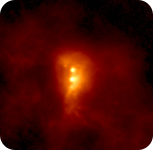
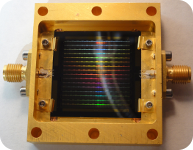
My role in the project was twofold: providing a readout solution ( see above) for its detectors, and its data reduction facility, CRUSH (see above). MAKO had its first successful run in April 2013, with newer generation detectors tested in May 2015, and produced some beautiful images with the help of CRUSH.
S-Z Clusters (2013 – 2015)
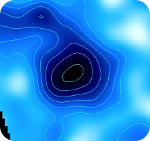
The IRAM 30-m telescope has a niche for clusters. Most other SZ studies are performed either on small (10-m class or smaller) telescopes, or else dedicated interferometers that have short (~10-m baselines) to retain sensitivity on the arcminute scales of most clusters. The 30-m telescope offers more collecting area than the smaller dishes or the SZ interferometers, and a resolution in-between those. It is a sweet spot, offering both excellent sensitivity and sufficient resolution for cluster sub-structure, and/or to resolve dusty galaxies (e.g. bright cluster-core galaxies) embedded within.
GISMO (2009 – 2013)
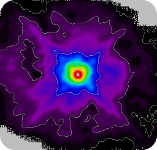
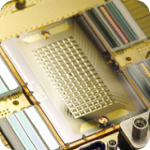
For me, GISMO marked the beginning of CRUSH-2, the new data reduction platform capable of supporting virtually any submillimeter camera. I have also been active in improving the GISMO's performance, from ~70 mJy s0.5 in 2010 to around 8 mJy s0.5 by 2012 (grounding, bias optimization, and optical troubleshooting – such as spillover, stray-light rejection). Now, we are using all we have learned in the process to build the larger, better successor instrument: GISMO-2...
APEX Cameras (2006 – 2012)
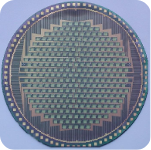
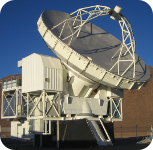
I have contributed to troubleshooting and optimizing its electronics (AC bias level and frequency), its signal chain (bias locked sampling, anti-alias filtering and downsampling, and microphonic avoidance), and optics (spillover and bandpass). Part of this effort saw the creation of the APEX Bridge software, a configurable anti-alias filtering and downsampling unit, which can be inserted between the control system (APECS/FitsWriter) and any telescope backend, in a transparent manner. My contributions to SABOCA were also similar in nature and in scope.
For the optimal reduction of data, I have forked my SHARC-2-specific CRUSH code, and created miniCRUSH for the APEX cameras. (By now, both the original CRUSH-1.xx and miniCRUSH have been retired in favor of the new CRUSH-2 platform, which does it all.)
Most recently, I have worked on supporting a chopped photometry mode for the APEX cameras, with a novel reduction approach that goes far beyond the traditional chop-nod analysis. Exploiting more of the redundancies present in the data stream, CRUSH is able to rid the chopped data from many of its traditional artifacts, yielding improved photometric sensitivity.
PolKa (2009 – 2011)
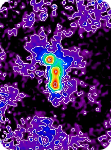
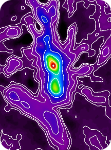
Giorgio and I have beaten the odds to demonstrate its operation, by successfully separating the polarized emission of OMC-1 from the unpolarized part, despite bad weather and many technical problems. I have innovated a new polarimetry data reduction approach for fast scanning with a rotating waveplate (i.e. the telescope moves by more than a beam during a polarization cycle!). I am convinced that this mapping mode is superior to the more traditional approaches, resulting in cleaner polarization maps. Most of the data from a second, more extended, PolKa run in 2011 is awaiting analysis...
Properties of SMGs (2003 – 2010)
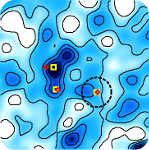
Based on the first limited redshift survey of SMGs (Chapman et al. 2005), I conducted a 350 μm follow-up, with SHARC-2 (Kovács et al. 2006). The addition of a shorter wavelength datum, near the SED peak, enabled the first true far-infrared (FIR) characterization (dust temperatures, masses and luminosities) of the SMG population. I concluded that SMGs were dusty galaxies typically around 35 K (although possibly getting hotter at higher redshifts), and that they strongly abide by the radio-FIR correlation (Helou et al. 1988) of local star-forming galaxies. As such, the SMG luminosities are predominantly fueled by star-formation, with no significant heating by an AGN, even when these are co-present.
In collaboration with A. Omont, we showed (Kovács et al. 2010) that the z~2 starburst galaxies selected by Spitzer (bumpies with a strong 24 μm excess due to the 7.7 μm PAH feature redshifting into that band) were essentially also SMGs, with nearly identical properties to the original Chapman et al. 2005 sample. Our study also provided one of the first hints that some of the mm-bright sources were in fact multiplets (we caught a triplet!), and that SMGs may be strongly clustered on short angular scales.
The LABOCA Deep Field (LESS) (2007 – 2010)
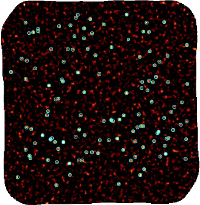
Apart from contributing to designing and conducting the survey, I was most active in pushing the data reduction to the limit, and was responsible for source extraction, the P(D) number counts analysis, and the deboosting of fluxes – all areas in which I have pioneered new approaches.
One of the major conclusions of the survey was that we saw no evidence for a break in the powerlaw, describing the number of SMGs vs their brightness, despite the larger range of sensitivity we had vs prior surveys. We suspected that such breaks were a by-product of the circular, catalog-based number counts approach used by some of the preceding surveys (which we confirmed explicitly via simulations). A second major conclusion was that our number count models accounted for most (80–100%) of the FIR background at 850 μm as measured by COBE. Thus, we have indirectly proved that the mm-wave background is composed (almost) entirely of SMGs.
The LABOCA Survey of Nearby Galaxies (2007 – 2008)
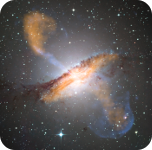
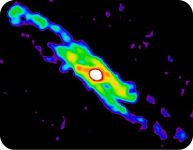
Deep observations of a handful of galaxies confirmed the value of the mm-wave measurement in determining the amount of cold star-forming material in these objects (Weiss et al. 2008). It also proved that single-temperature models, quite common until then, were inadequate for characterizing galaxies as a whole. This, in turn inspired me to develop my empirical multi-temperature SED model for describing the thermal emission of galaxies, one of my research areas today.
SIS Mixer Design (2002 – 2004)
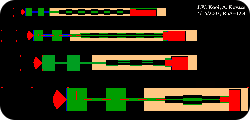
The wide-band operation (up to 160 GHz) posed challenges for the mixer design with the medium current-density (12 kA/cm2) AlN barrier junctions supplied by JPL Microdevices Lab at the time. I used SuperMix simulations to determine the most robust design capable supporting that bandwidth, resulting in a minimalistic matching network in combination with twin SIS junctions. The mixers operate near or slightly above unity gain in all bands (180 – 730 GHz). I suggested a similar design for HIFI Band 1 as a consultant to LERMA. Even though the lack of manpower delayed delivery until now, they will be some of the best receivers in the world today...
SHARC-2 (1997 – 2003)
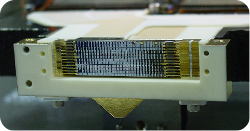
I also wrote SHARC-2's first control and data acquisition software (JSharc), before we received IRC from NASA/Goddard. After commissioning in November 2002, I developed a direct calibration-scheme for the non-linear loading-dependent bolometer response, line-of-sight measurement (direct tau), a server for the polynomial tau fits (MaiTau), and a characterization of the 350um atmosphere (sky noise spectrum and effective NEFD statistics). 10 years after it began operation, SHARC-2 was still the best 350 μm camera on the ground(!). But, now we hope to de-throne it with MAKO ;-)...
Millimeter-wave Spectroscopy of Carbon-chain Radicals (1996 – 1997)
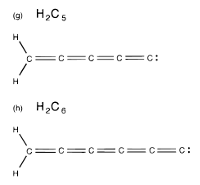
Later, I was charged with getting the new Fourier Transform Spectrometer (FTS) to work. I wrote a large part of its control and acquisition software, and proceeded with optimizing the operational parameters for detection. My efforts were rewarded by getting its first detections: the cumulene carbenes H2C5 and H2C6 (McCarthy et al. 1997b), the latter of which was subsequently detected in space also (Langer et al. 1997).